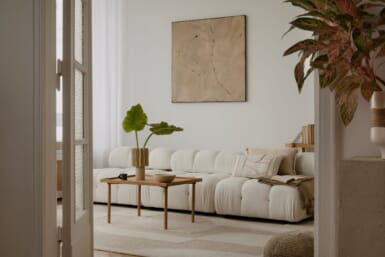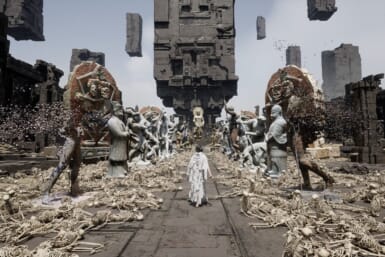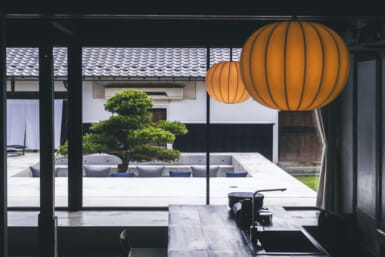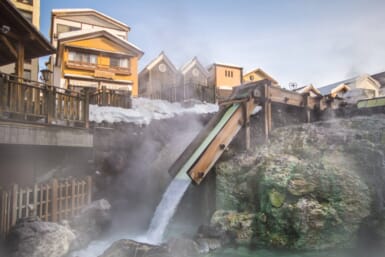by Owen Schaefer
When Buddhism began to spread across India around 230 B.C., one of its biggest promoters was the emperor Ashoka the Great. Ashoka, who controlled an enormous part of the Indian subcontinent, sent out a series of edicts to be carved into pillars, stones and holy caves, asking his subjects to be kind to one another, to stop practicing “useless” rituals, to stop killing animals except for food, and most of all, to practice Buddhism.
And according to South Korean artist Jae-Eun Choi, Ashoka also fostered forests. The emperor asked each of his subjects to plant five different trees to serve various purposes, and story of these forests is the inspiration for Choi’s exhibition “Forests of Aśoka” at the Hara Museum of Contemporary Art till December 26.
Choi is probably best known for enormous installations — the kind of artworks that are built as much as they are displayed — many of them involving trees or nature. Originally a practitioner of the Sogetsu School of contemporary ikebana, and later influenced by the Fluxus movement, Choi has something of a passion for trees, and in this show, she reaches back through human history to reveal how primal our connection to forests is.
In the show’s title piece, Choi has piled rough-hewn planks of wood on a gallery floor, stacking them until they appear to pour in through the window and flow out the door. It’s a smart use of a space where living trees are visible directly outside, and the gallery’s own hardwood floor seems complicit in the arrangement. Walking on the planks (permitted only near the door) produces a chorus of squawks: the wood’s voice rising against you.
The show has a strong focus on movement, which acts as a metaphor for time. While the effect is subtle in “Forests,” it is made explicit in works such as “Flow,” in which a time-lapse video shows natural light move across the features of an enormous tree; or in “Since When has the Forest Been There?” in which treetops flash by on a screen. There are no details, only flashes of lit sky — the longer you watch, the more abstract it becomes, with the forest going on and on and appearing to become larger, and by extension, older, by the moment.
There is movement even in her photographic series, “The Other Side of Illusion,” in which Choi shoots landscapes and tree canopies in long-exposure, slowly moving her camera. The results are still photographic versions of the fast-moving video work: smears of light and colour, abstract yet recognizable for what they are. That recognition, programmed by millennia of human interaction with forests, makes clear that the act of looking up through the leaves of a tree is an ancient and near-universal human experience.
Forsaking clever revelations, Choi’s works are best considered as an invitation to slow meditation. In Forever and a Day, five large video screens show close-ups of the roots and bark of different trees, the camera panning painfully slowly over their surfaces. Nothing happens, but over time the viewer is tempted to compare the shapes to landscapes, to stones, to flows of water, and even to human bodies. With works like these, Choi doesn’t need to plant seeds of an environmental idea in her audience’s mind instead, she is content to patiently encourage the roots that were already there.
Show: Jae-Eun Choi — Forests of Aśoka (to Dec. 26)
Gallery: Hara Museum of Contemporary Art (Shinagawa Station)
Hours: 11am–5pm (Wed. to 8 pm; Closed Mon.)
Admission: ¥1000 Tel: 03-3445-0651
www.haramuseum.or.jp
Photo courtesy of Hara Museum









